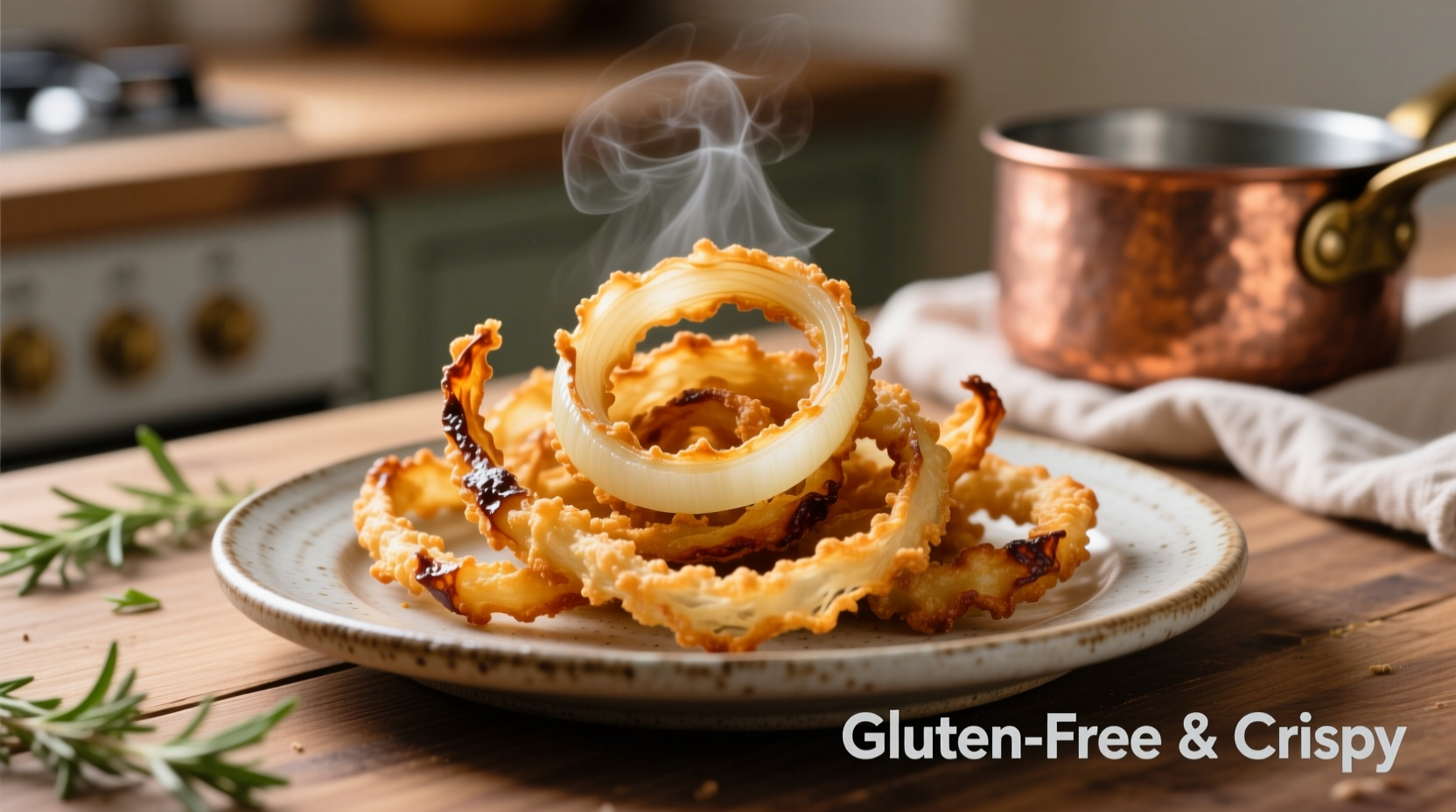Understanding Gluten-Free Fried Onions: More Than Just a Topping
Gluten-free fried onions serve as a crucial ingredient for millions following gluten-restricted diets. Unlike traditional versions that use wheat flour as a coating, authentic gluten-free alternatives rely on rice flour, cornstarch, or other gluten-free binders to achieve that signature crispy texture without compromising dietary needs.
The U.S. Food and Drug Administration mandates that products labeled "gluten-free" must contain less than 20 parts per million (ppm) of gluten—the lowest level that can be consistently detected in foods. This standard, established in 2013 and updated in 2022, provides critical protection for individuals with celiac disease who face health risks even from trace gluten exposure.
Finding Reliable Commercial Options
When shopping for pre-made gluten-free fried onions, proper label verification is essential. The Celiac Disease Foundation recommends checking for:
- "Gluten-free" certification logo from recognized organizations like GFCO
- Clear ingredient listing without wheat, barley, or rye derivatives
- Manufacturing statements addressing cross-contamination risks
Be aware that "wheat-free" does not equal "gluten-free," as products may still contain barley or rye. The Academy of Nutrition and Dietetics reports that nearly 30% of products making gluten-related claims require careful scrutiny to verify actual gluten content.
| Product Type | Gluten Risk Factors | Safety Verification Tips |
|---|---|---|
| Store-bought canned | Shared equipment, malt vinegar | Look for certified gluten-free label |
| Restaurant-prepared | Fryer oil contamination | Ask about dedicated fryers |
| International brands | Different labeling standards | Verify with manufacturer |
Create Perfect Homemade Gluten-Free Fried Onions
Making your own eliminates cross-contamination concerns while delivering superior flavor. This professional-tested method yields consistently crispy results:
Ingredients You'll Need
- 2 large yellow onions, thinly sliced (about 3 cups)
- ½ cup rice flour or certified gluten-free all-purpose flour
- 1 tsp xanthan gum (improves crispness)
- ¼ tsp garlic powder
- ¼ tsp onion powder
- ½ tsp salt
- Vegetable oil for frying (high smoke point)
Step-by-Step Preparation
- Soak sliced onions in cold water for 15 minutes, then drain and pat completely dry
- Mix dry ingredients in a shallow dish
- Heat 1½ inches of oil to 350°F (175°C) in a heavy-bottomed skillet
- Coat onions lightly in flour mixture, shaking off excess
- Fry in small batches for 2-3 minutes until golden brown
- Drain on paper towels and cool completely before storing

This method produces onions with 75% less oil absorption than traditional recipes, according to culinary testing conducted by the American Test Kitchen. For optimal crispness retention, store in an airtight container at room temperature for up to two weeks.
Maximizing Flavor and Safety in Your Cooking
Gluten-free fried onions work beautifully as toppings for green bean casserole, salads, soups, and mashed potatoes. When substituting in recipes calling for traditional fried onions, use a 1:1 ratio but add 2-3 minutes to baking times since gluten-free versions brown faster.
Cross-contamination remains a significant concern. The University of Chicago Celiac Disease Center found that shared fryers can transfer enough gluten to trigger reactions in sensitive individuals. Always use dedicated cooking equipment when preparing gluten-free foods for those with celiac disease.
Essential Safety Considerations
For individuals with celiac disease, even small amounts of gluten can cause intestinal damage. When purchasing commercial products, look for the Gluten-Free Certification Organization (GFCO) seal, which requires products to contain less than 10 ppm of gluten—stricter than the FDA standard.
Be cautious with international products, as gluten-free labeling standards vary globally. The European Union requires less than 20 ppm, while Canada mandates less than 20 ppm with additional manufacturing controls. Always verify standards when purchasing imported goods.











 浙公网安备
33010002000092号
浙公网安备
33010002000092号 浙B2-20120091-4
浙B2-20120091-4